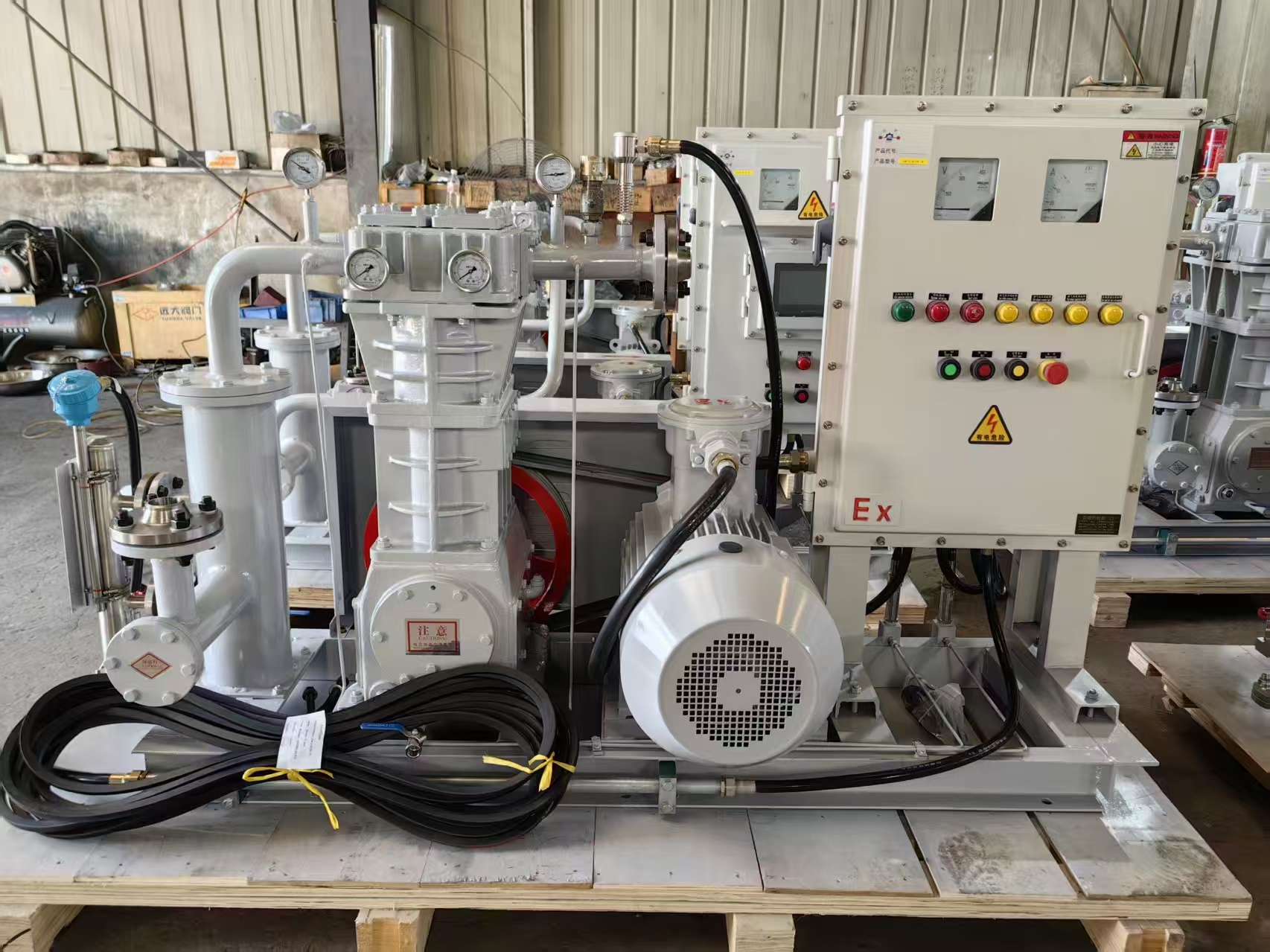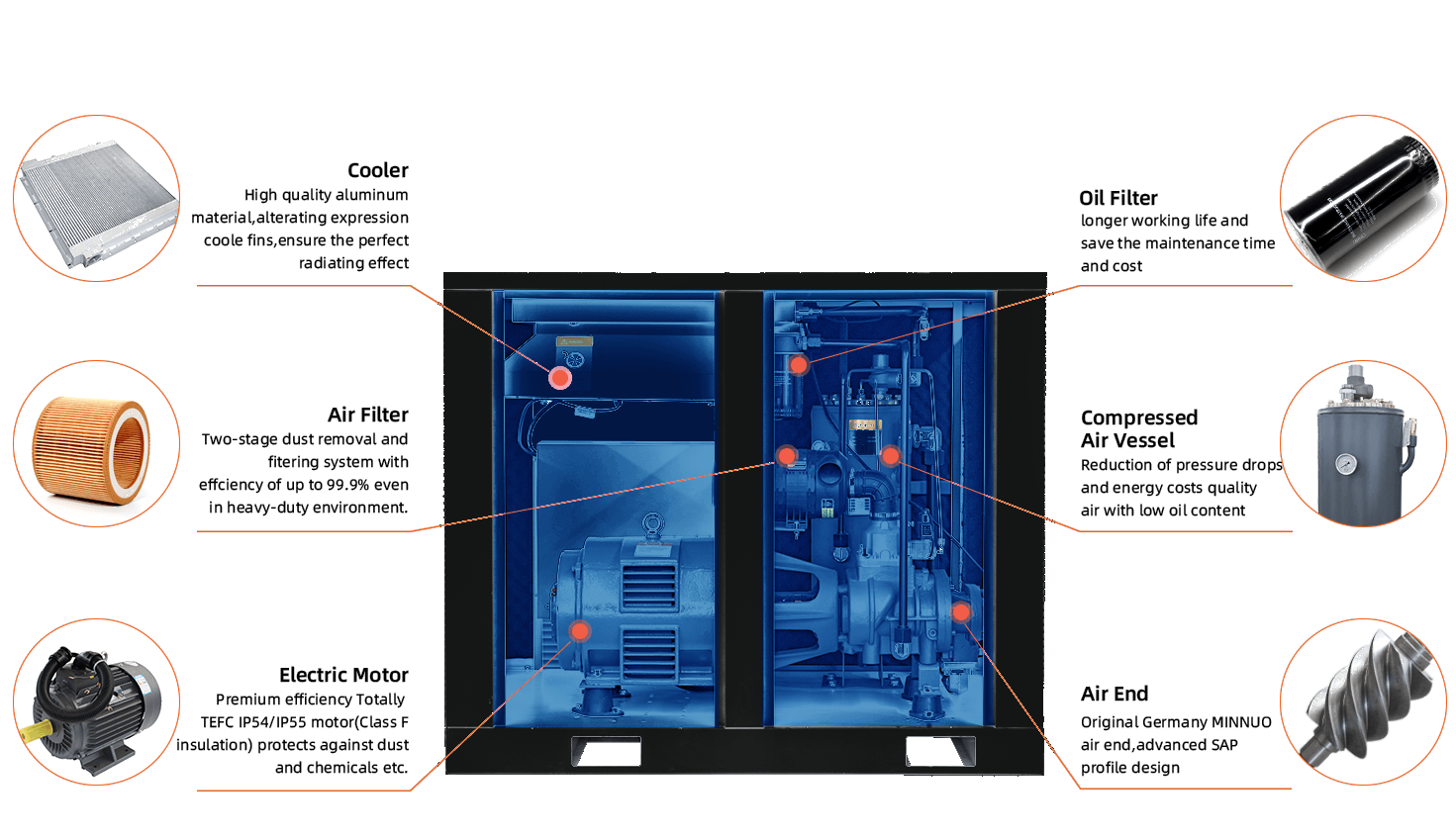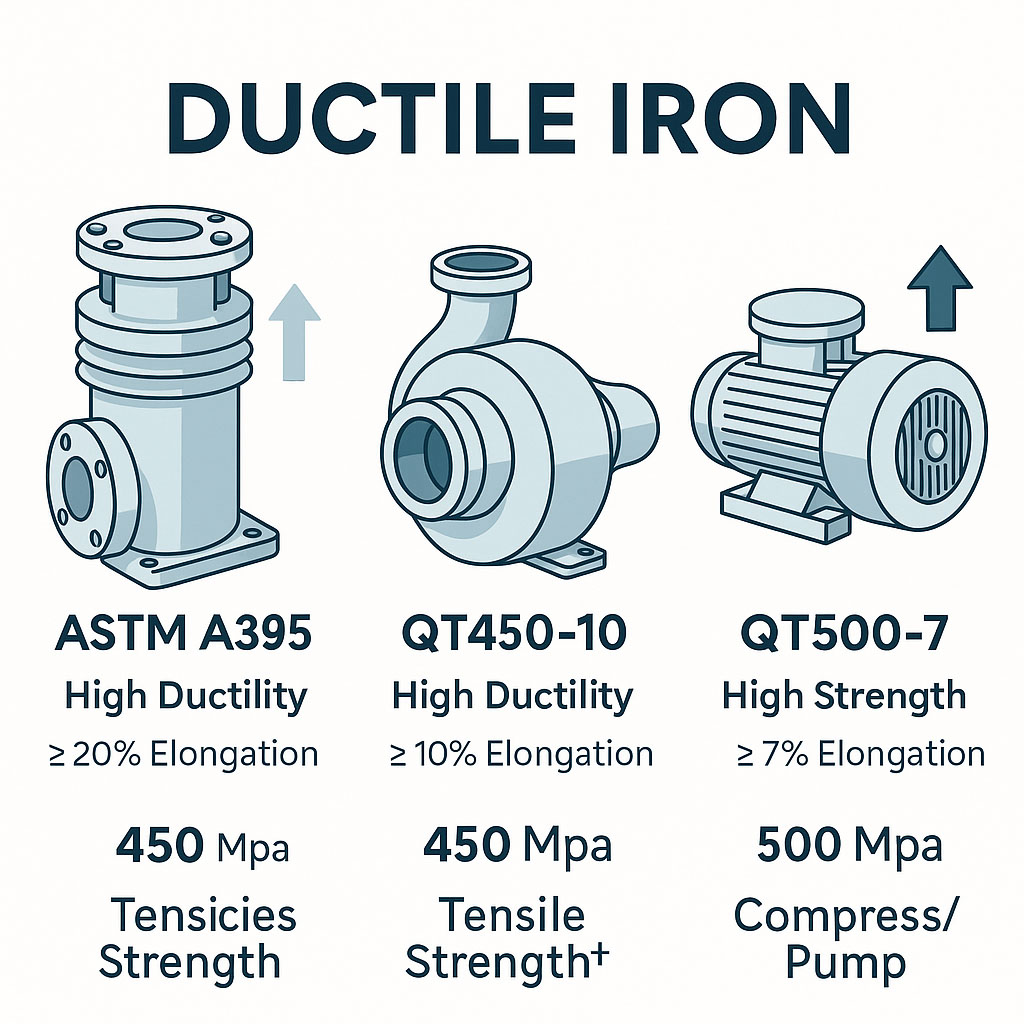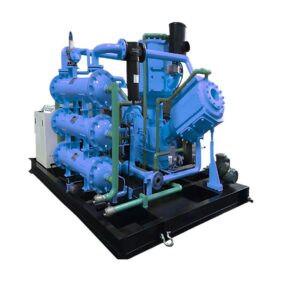パイプラインのガスは、圧力を上げなければ長距離を移動できない。その仕事は 天然ガス・コンプレッサー・ステーションガス圧縮設備は、坑口から都市ゲートまで分子の流れを維持するために戦略的に配置された設備である。このガイドでは、ガス圧縮のプロセス、主なステーションの設備、信頼できるガスの選び方を紹介する。 天然ガス圧縮機メーカー.
1️⃣ なぜコンプレッサーステーションが不可欠なのか?
パイプライン内の摩擦、高低差、分岐タップは着実に圧力を奪っていく。そのため 天然ガス用コンプレッサー・ステーション 80~160kmごとに流速を回復させる。これがなければ、処理能力は停滞し、供給契約は破綻し、液体が脱落して腐食を引き起こす可能性がある。
2️⃣ ガスコンプレッション・プロセスのステップ・バイ・ステップ
-
インレットセパレーション
- ガスはまず、水と凝縮水を除去するスクラバーに入る。 -
吸引冷却
- インタークーラーは温度を下げ、圧縮前の密度を高める。 -
コンプレッション・ステージ
- ピストン、スクリュー、または遠心インペラーは、圧力をパイプラインの仕様まで上昇させる。 -
アフタークーリング
- 圧縮熱は取り除かれ、液体は凝縮してノックアウトポットから排出される。 -
計量と脱臭
- 流量計で容量を確認し、漏れ検知のために臭気物質を注入することもある。 -
パイプラインへの排出
- クリーンで加圧されたガスは、次の旅程のために再びメインラインに入る。
一方、リモートPLCは振動、温度、エネルギーデータを記録し、コントロール・センターが複数のユニットの負荷分散を最適化できるようにする。
3️⃣ 現場で見かけるコア機器
| システム | 目的 | 代表的な技術 |
|---|---|---|
| プライムムーバー | 燃料を軸動力に変換 | ガスエンジンまたは電気モーター |
| コンプレッサー | 圧力を上げる | 往復動式、スクリュー式、遠心式 |
| クーラー | 熱を取り除く | エアフィン・ラジエーターまたは水交換器 |
| 分離 | 液体を排除する | 縦型または横型スクラバー |
| 制御と安全性 | 自動化/シャットダウン | PLC + SCADA + ESDバルブ |
Keepwinパッケージは、オイルフリーのレシプロボディと高速モーターを組み合わせ、API-618の振動制限を満たしながら100バールの吐出を実現します。
4️ ⃣ 往復動とスクリュー・トレインの選択
| ファクター | レシプロ | ネジ |
|---|---|---|
| 圧力 (>80 bar) | 高い | 限定 ◻ 限定 |
| 流れの安定性 | 脈打つ | スムーズ |
| 部分負荷効率 | 強い | より低い |
| メンテナンス間隔 | 8 000 h | 4 000 h |
それゆえ、クロスカントリー幹線は多段ピストンに頼っているのに対し、ギャザリングシステムは、連続的で中程度の圧力のツインスクリュースキッドが好まれる。
5️ ⃣ 信頼できるメーカーの選択
比較する場合 天然ガス圧縮機メーカー評価する:
-
API認証設計(618、11P)
-
同様のガス組成で実績のあるリファレンス
-
現地サービスチームの有無
-
スペアパーツのリードタイムは72時間以内
-
ポートフォリオの重複 水素コンプレッサーメーカー-高圧的な専門性の表れ
6️⃣ 未来への備え:水素混合
エネルギーグリッドは5-20 % H₂ブレンドを準備している。ステーションは水素脆化に適合する材料とシールを必要とします。Keepwinはすでに、大手電力会社の認定を受けたレシプロスキッドを提供しています。 水素コンプレッサーメーカー 規格に準拠し、明日のコンプライアンスを今日保証する。
✅ ステーション・デザイナーのためのクイック・チェックリスト
-
予想ピーク流量の110 %に対応するサイズ。
-
冗長性のために2台+1台のスタンバイを使用する。
-
ジャケットウォーターの熱をビルの空調用に回収する。
-
連続リーク監視センサーを設置する。
-
ベアリングの寿命を延ばすため、四半期ごとに振動解析を実施する。
詳細が必要ですか?
Keepwin Technology Hebei Co, Ltd.は、完全なモジュラーシステムを供給しています。 天然ガス用コンプレッサー・ステーションエンジニアリング、製作、FATを含む。オーダーメイドの設計パッケージについては、私たちのチームにお問い合わせください。
📧 keepwin@keep-win.com🌐 www.keep-win.com
加圧状態を維持し、ガスを動かし続ける。











